
TVS Apache RR 310 OMC Race Bike Experience: Unbelievable But Equally...
- Apr 29, 2022
- Views : 5716

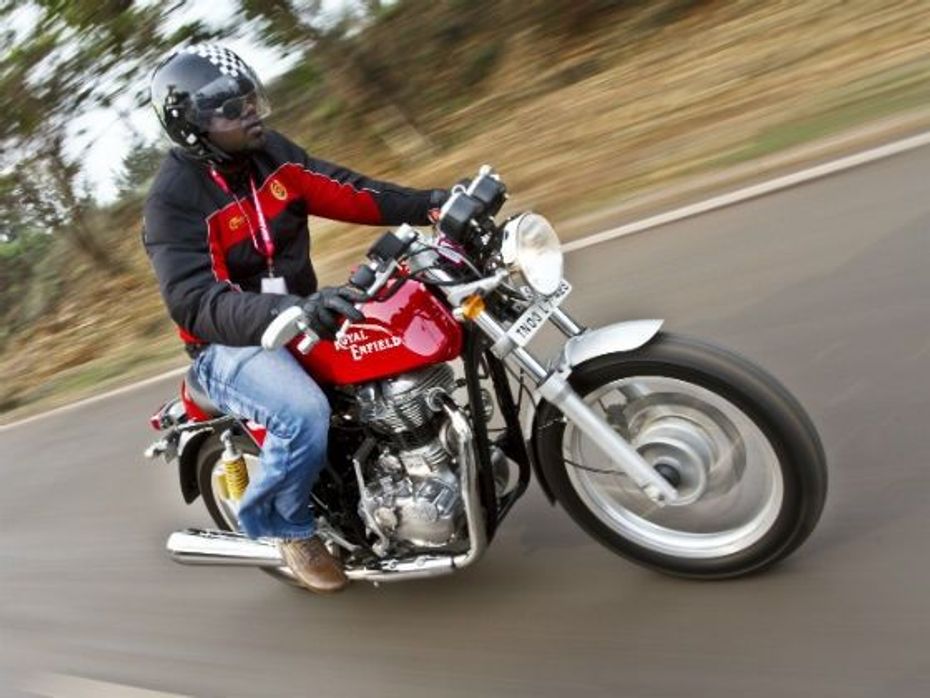
Motorcycle and Goa - well these are two words which can get you the attention of any biker and make him excited and I wasn’t any different as I boarded a delayed flight to my favourite vacation destination. As I landed at a hot and sultry afternoon at the Dabolim Airport, the first visual that stuck me was the sheer number of journalists who were waiting to get ferried to the hotel and then it sunk in to me that how important the Continental GT is for Royal Enfield. And it has to be vital for the Chennai based two-wheeler manufacturer as with this café racer, Royal Enfield was trying to revive one of its most dynamic motorcycles from its prolific portfolio and a lot was riding on its back to get it right at the very first attempt. On the personal front, I was very keen to ride the bike as I had pre-assumptions that the iconic two-wheeler manufacturer from Chennai had wavered off its path of ethos with this café racer, did my suppositions prove right? Well read on
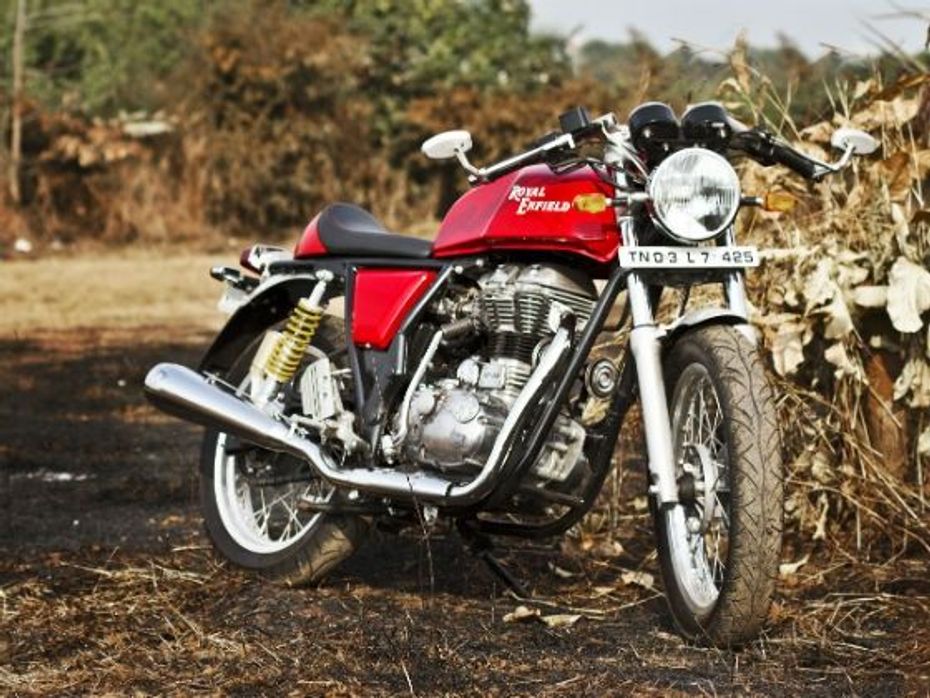
Looks that matter:
I had seen photos of the bike earlier when the company’s CEO, Siddhartha Lal had gone for a test run from Goa to Mangalore and at its world debut in United Kingdom but it was the first time that I was witnessing it in flesh as it excluded an aura of classic charm around it. The silhouette of the Continental GT is akin to that of a typical café racer and the design of the new offering from the stables of Royal Enfield has been heavily based from the 1965 Continental GT, which was a 250cc bike developed to target the young riders of that era.
Major influences include the extended, narrow low-profile fuel tank with knee recesses, clip-on handle bars, neatly sculpted single seat and bum stop (dual seat available as optional) with red contrasting stitching. For me the beauty of the Continental GT lies in its details like the trimmed and stubby front mudgards, bar-end mounted rear-view mirrors, upswept exhaust pipe, the Monza-style flip-up fuel cap cover below which we can find the Continental GT decals and grooved footpegs. The Conti GT features twin pod analogue instrumentation cluster with one dial acting as the speedometer in both mile and kilometre, while the other acts as a revv counter with other tell-tale lights.
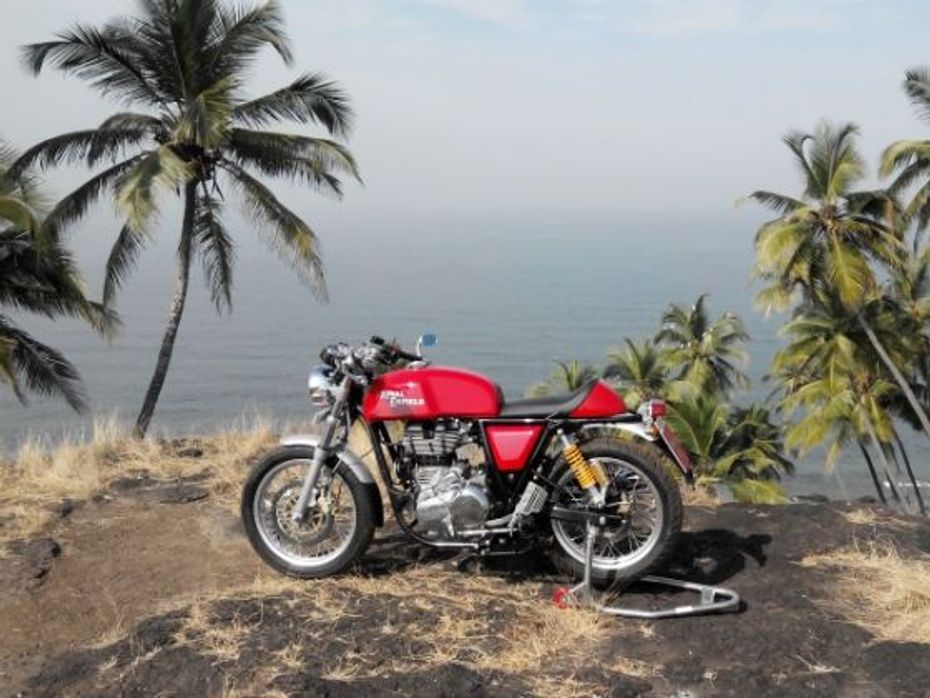
The overall build quality of the switchgear and the bike is respectable and though fit and finish has been improved vastly over the years there are a few minor rough edges which we hope Royal Enfield takes care of soon. Underneath the dials, the retro-looking fully-chromed headlamp is housed which augments the bikes appeal further. The tail is very minimalistic compared to the front with a small taillight and turn lights but doesn’t look out of place and somehow succeeds to gel in with the bikes profile. The overall design of the Continental GT is very contemporary and well proportionate one has to commend Mark Wells of Xenophya Design and Royal Enfield’s S Sivakumar for crafting this gorgeous creation.
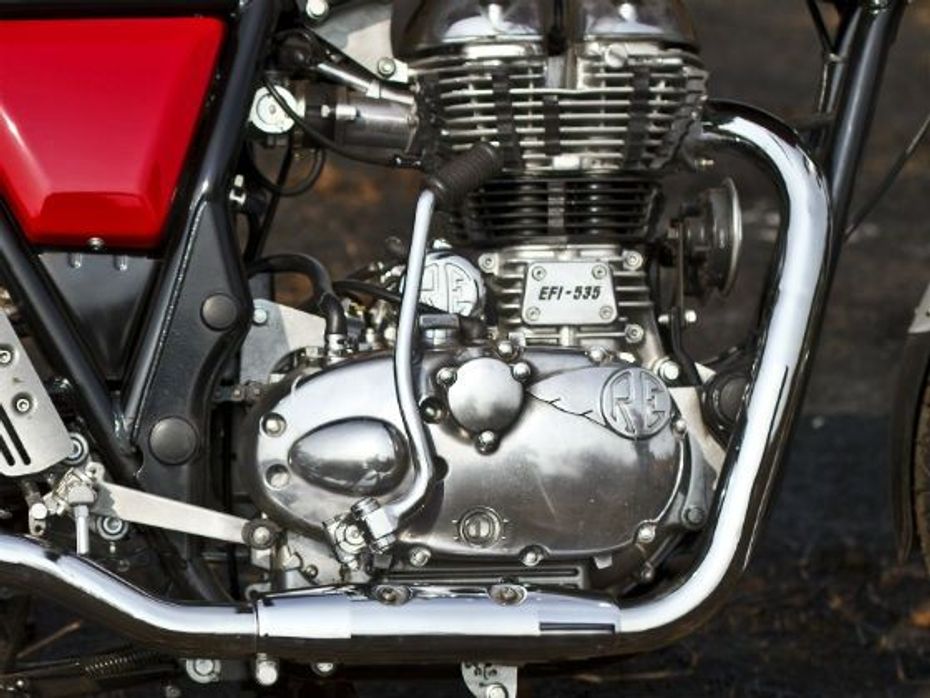
What lies beneath the skin?
The boffins at Royal-Enfield were in a puzzle while developing the heart of the Continental GT and it was whether to employ the tried and tested 500cc mill or develop an all-new engine. And after lot of brain storming, they finally came out with a solution, which was to bore-out the existing 500cc mill and thus the 535cc powerplant was born. The donor engine is the Unit Construction Engine (UCE) found on the Classic and Thunderbird 500, which apart from boasting additional cubic capacity boasts a re-mapped ECU and lower inertia to meet the café racer dynamics of the Continental GT. Since the bike had to be the fastest Royal Enfield, a hike in power was essential and the air-cooled, 4-stroke mill, 535cc mill pumps out a healthy 29.5PS @ 5,100rpm and a generous torque figure of 44Nm @ 4,000rpm. The engine is mated to a five-speed constant mesh gearbox and fuelling is taken care of by Keihin electronic fuel injection system.
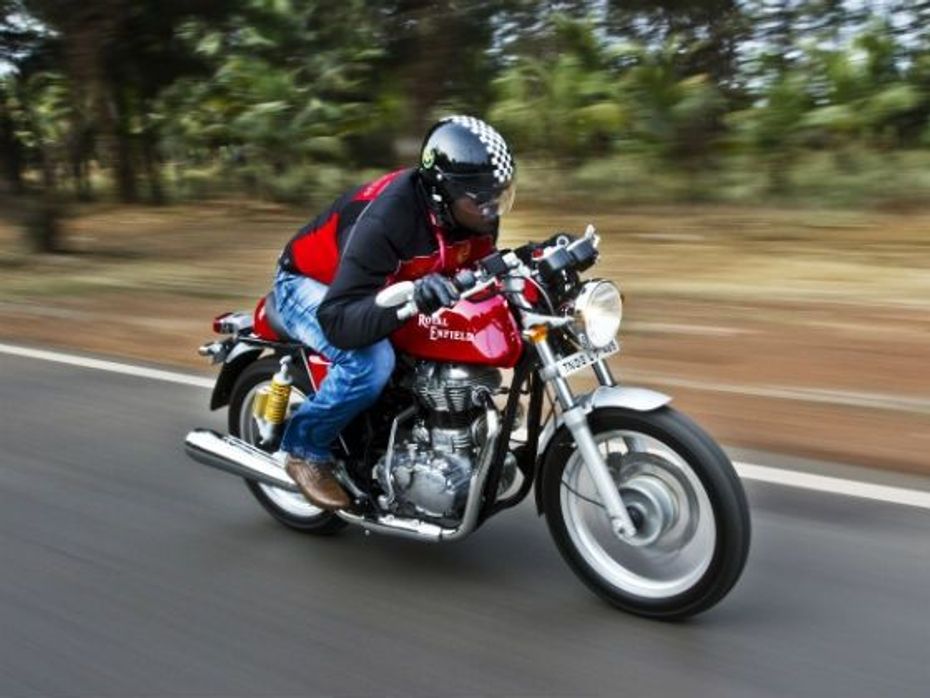
Push the starter and the engines comes to life instantly with a nice burble initially but settles down to a mellowed down idle after few seconds. The engine feels aptly powered and doesn’t feel strained until speed around 100 to 120km/h and only at the apex of its performance does that the engine feels under pressure. The gearing of the Continental GT is spot on and it was a pleasure to ride the bike at low speeds and also the clutch feel was flawless. But the Continental GT comes to its own element at speeds around 100km/h as the bike performs effortlessly with a sweet exhaust note in the background from the megaphone styled pipes and the bike just urges the rider to keep on riding. Royal Enfield have taken special provisions to reduce the vibrations from the engine and they have been successful to a certain extent as the vibrations are mellow compared to other offerings from its stable still they have to work more hard to further reduce them.

Time to ride:
As you plant yourself on the Continental GT, one can realise that a lot of thought process has gone into making the bike ergonomically comfortable. The clip on handle bars is placed on twin triple clamps and not directly on the front forks. This wouldn’t appeal to many hard-core café racer loyalists but this has been done to make the Continental GT comfortable for riders so that the bike isn’t restricted only for the young brigade or guys who are flexible as a gymnast. The foot pegs has been positioned furthermore at the rear so that one can get a sporty stance on the machine. Visually it seems the rider is stretched out and sitting uncomfortably but that isn’t the case as I covered close to 250km on the first day without much effort and found the riding position sporty yet comfortable. One of the major criteria’s for the engineers while developing the Continental GT was to endow it with a handling finesse which was better than any other Royal Enfield. For this they took the help of the renowned UK based Harris Performance. The first step that they took was to junk the old single down-tube for a double-downtube chassis and the results are clearly visible.
The handling of the Continental GT is just blissful and the bike is eager to corner craving without the rider breaking in to a sweat, this was something I never imagined that I would be writing about a Royal Enfield and Steve Harris has to be lauded for his effort. Another vital cog which helps in the handling of the bike is the Pirelli Sport Demon tyres (the front sporting a 100/90-18 56H unit while on the rear is a 130/70-18 63H tyre). The tyres are very instrumental in allowing the rider in exploring the dynamics of the bikes chassis and it is great to see two-wheeler manufacturers like KTM with its 390 Duke shod with Metzeler tyres and now Royal Enfield with Pirelli’s concentrating on good quality tyres in our country as they are key factors contributing in the motorcycle’s handling and braking prowess. Apart from looking retro and chick, the main purpose of the upswept exhaust pipes is to offer the rider better lean angle during cornering without scraping it.
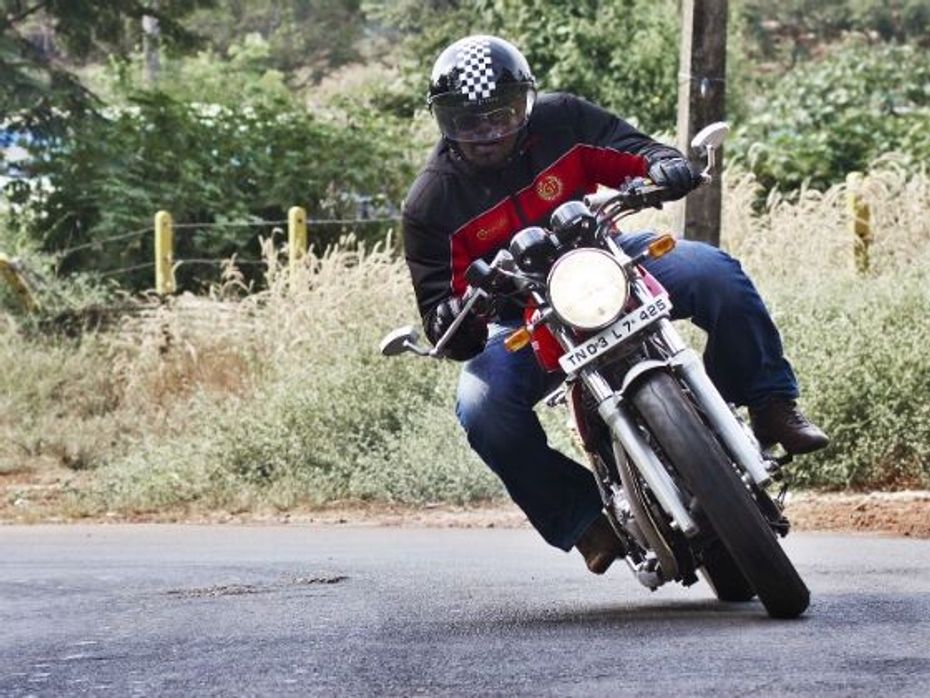
The other highlight of the Continental GT is its wonderful and supple ride quality and this has to be credited to the 41mm dia stanchion (made by Gabriel) front telescopic forks and twin Paioli gas charged shock absorbers at the rear. Braking responsibilities is taken care of by 300mm dia Brembo single disc unit with twin-piston calipers at front and 240mm dia disc brake with single pot calliper at rear and I would like to point out that these are actual Brembo sourced brakes and not obtained from its subsidiary Bybre. The brakes are among the best in the segment and provide great feedback to the rider. Overall I liked the handling characteristics of the Continental GT and one can go knee scrapping with it if he wants to but the main purpose of it is to provide a laid back and relaxed ride with a touch of sportiness to make it more intriguing.
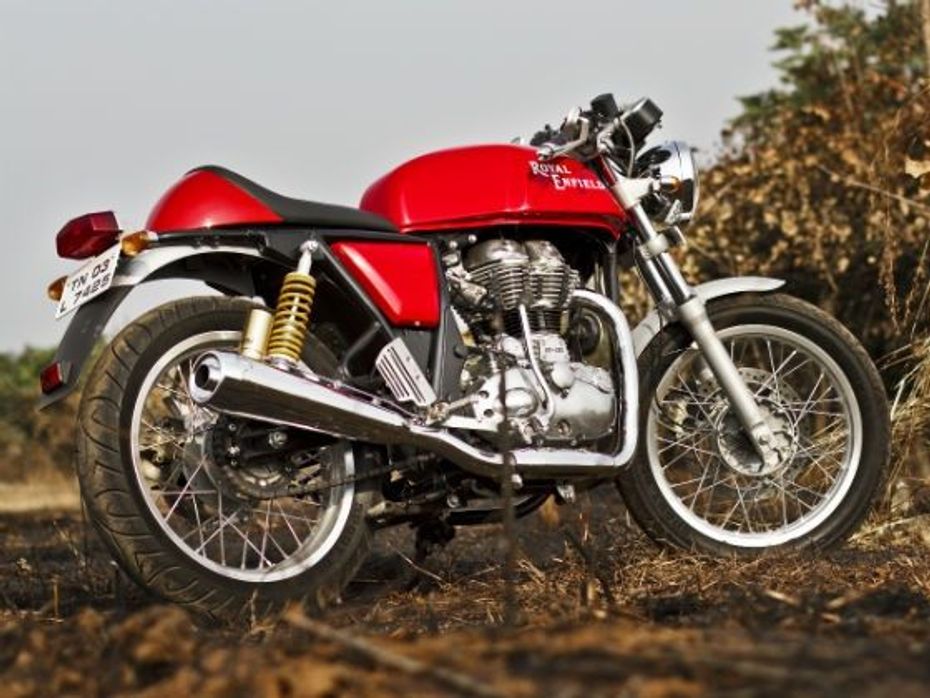
Verdict:
The Continental GT is a wonderful effort by Royal Enfield considering the amount of pressure they had when they set out resurrecting one of the icons from its glorious past. Although, it is faster and nimbler than any other offerings from the Chennai based two-wheeler manufacturer yet it has the dash of the Royal Enfield DNA in it which it boasts of proudly. One might say that from a 535cc mill one could have anticipated much more power and he would be right but the point here is about accessible power and the rider is able to achieve all the power that the café racer’s heart has on offer. Also, one has to work his way through the engine to extract every ounce of juice which the powerplant has on tap and though many would say that power should be readily available at the twist of throttle but I feel the joy of a motorcycle remains in the amount of involvement the rider has with his machine.
And on that aspect, the Continental GT scores highly as you are interacting constantly with the bike while riding it. It is also not the kind of bike which one would use as your daily ride (though one can use for short rides around city in utter comfort) or for cross country touring and in most circumstances it would mostly be a second bike in the owner’s garage. The Continental GT is that kind of motorcycle on which the rider can go out on a short weekend ride and spend some quality time relishing the joy of motorcycling. Priced at Rs 2.15 lakh on-road Mumbai it is an expensive proposition and there are other much powerful offerings in the similar price bracket like the KTM 390 Duke and the Honda CBR 250R but the Continental GT is one of those rare breed of motorcycles which you buy from your heart and not your brain.

TVS Apache RR 310 OMC Race Bike Experience: Unbelievable But Equally...

TVS Apache RR 310 OMC ARRC Ride Experience: India’s Most...

Back To Basics - A Track School Experience On The TVS Apache RR310

TVS Apache Racing Experience - Taming the TVS Apache RR310 OMC Race...

2024 TVS Apache RR 310 First Ride Review: Better Than Ever Before!
 TVS Apache RR 310
TVS Apache RR 310
India's largest automotive community
 Royal Enfield Classic 350
Rs. 1.93 Lakh
Royal Enfield Classic 350
Rs. 1.93 Lakh
 Royal Enfield Hunter 350
Rs. 1.49 Lakh
Royal Enfield Hunter 350
Rs. 1.49 Lakh
 Royal Enfield Bullet 350
Rs. 1.73 Lakh
Royal Enfield Bullet 350
Rs. 1.73 Lakh
 Royal Enfield Continental GT 650
Rs. 3.19 Lakh
Royal Enfield Continental GT 650
Rs. 3.19 Lakh
 Royal Enfield Meteor 350
Rs. 2.05 Lakh
Royal Enfield Meteor 350
Rs. 2.05 Lakh